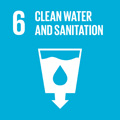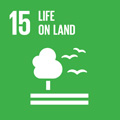- Docente: Annamaria Colacci
- Credits: 3
- SSD: MED/42
- Language: Italian
- Teaching Mode: Traditional lectures
- Campus: Bologna
- Corso: Second cycle degree programme (LM) in Health Biology (cod. 9212)
-
from Apr 15, 2025 to May 29, 2025
Learning outcomes
The course aims to provide students with in-depth knowledge of the principles of applied hygiene, with a particular focus on public health, prevention, risk assessment, and strategies for health promotion. Students will gain practical skills in analyzing hygienic and sanitary issues across various contexts, from public spaces to workplaces, and emergency scenarios.
Il corso mira a fornire agli studenti conoscenze approfondite sui principi dell’igiene applicata con particolare attenzione ai temi di sanità pubblica, prevenzione, valutazione dei rischi e strategie per la promozione della salute. Gli studenti acquisiranno competenze pratiche nell’analisi di problemi igienico-sanitari in diversi contesti, dallo spazio pubblico agli ambienti di lavoro, fino a scenari di emergenza.
Course contents
Module 1: Fundamental Concepts of Hygiene, Public Health, and the One Health Paradigm
-
Basic concepts of hygiene and public health: the role of the environment and society.
-
One Health: integration of human, animal, and environmental health.
-
Origins of the concept and its applications in modern public health.
-
Practical examples: zoonoses, food safety, climate change, and emerging diseases.
-
-
Determinants of health: biological, environmental, and socioeconomic factors.
-
Epidemiological descriptors: incidence, prevalence, mortality, and risk factors.
-
Disease pathways: causality, biological plausibility, and multifactorial models.
-
Fragility and vulnerability: children, the elderly, pregnant women, and socially at-risk populations.
-
Maternal-fetal exposure and its effects on life trajectories: focus on reproductive health and development.
-
Global health and inequalities: impacts of migration and urbanization.
-
Classification of biological agents and their impacts on human health.
-
Infectious and non-infectious communicable diseases: epidemiology and transmission modes.
-
Public health interventions for preventing infectious diseases: vaccination, prophylaxis, and outbreak control.
-
The concept of the pollutome: cumulative exposures and chronic-degenerative diseases.
-
Examples of environmental and occupational exposures (asbestos, heavy metals, air pollution).
-
Primary prevention: health promotion, risk reduction.
-
Secondary prevention: early diagnosis and screening (e.g., cancer and cardiovascular diseases).
-
Tertiary prevention: management and quality of life improvement for chronic diseases.
-
The role of public health in the One Health paradigm: practical cases.
-
Anthropization and Planetary Health.
-
Climate change and health: impacts on communicable diseases, food security, and environmental disasters.
-
Mitigation and adaptation strategies.
Readings/Bibliography
For each topic, educational materials and bibliographic references for further study will be provided.
Teaching methods
-
Lectures: Theoretical presentations integrated with practical case studies.
-
Interactive Discussions: Analysis of concrete examples, such as zoonosis management or health emergencies.
Assessment methods
Written Exam (100%): multiple-choice questions, matching, true/false, and open-ended questions on fundamental concepts
Teaching tools
-
Slide Presentations: Well-structured slides, supported by practical examples.
-
Pre-Recorded Lectures: Using software approved by the University to record and share lectures.
-
Digital Teaching Tools
- Panopto: For recording lectures and providing students with asynchronous access.
- Mentimeter: For polls, quizzes, and interactivity during lectures.
- Virtuale: Platform for sharing educational materials and managing activities.
- Teams and Zoom: For remote lessons and meetings.
Office hours
See the website of Annamaria Colacci
SDGs




This teaching activity contributes to the achievement of the Sustainable Development Goals of the UN 2030 Agenda.
